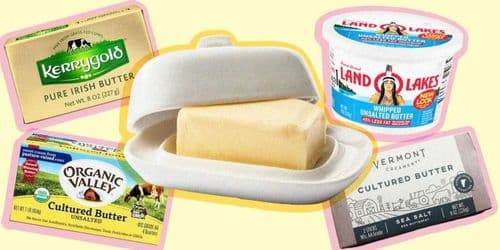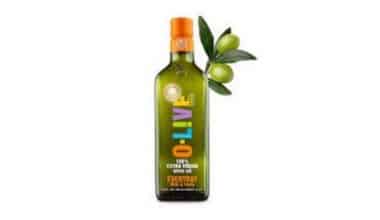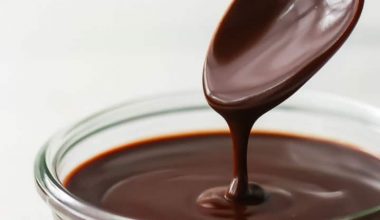Butter makes everything better, but is there a certain butter that is superior to the others? There are many different kinds of butter, and each one adds something different to the success of a recipe. It can be confusing with so many butter alternatives available, so that’s why we’ve listed out the real butter brands, Irish butter brands, and grass-fed butter brands for you to choose from. Also, we added the list of the worst butter brands you need to avoid
Butter
There’s no need to introduce butter. Undoubtedly, it’s currently in some form in your refrigerator. But do you have the 84% butterfat butter you need to cut the dough into layers and make a flaky croissant? Or the flavored butter with herbs and spices that gives cooked meat or fish a huge boost of flavor? Think about spreading fermented butter on your artisan bread to make it taste even better. There are many different kinds of butter, and each one adds something different to the success of a recipe. Your recipes will always be at their best if you have a few different types of butter in the fridge
Types of Butter
Finding the best type of butter for your recipe requires understanding how the various butter varieties differ in terms of color, flavor, and application.
#1. Unsalted Butter
The ideal butter for baking is unsalted, which has a light sweetness. You are left with the true taste and flavors of the churned cream because it has not been salted, allowing you to keep control of the flavors in your baking recipe. Since baking is an exact science, the amount of fat, water, and salt in butter can influence how well a dish turns out. Make sure to follow the recipe’s instructions carefully, and if you’re creating your own dish, it’s best to stay with unsalted butter.
#2. Salted Butter
For every 4 ounces of salted butter, around 1/4 teaspoon of salt is applied. Even while it can appear like a modest amount, it actually affects flavor. The additional salt enhances the taste of your dish and keeps your butter fresher for longer.
#3. Sweet Cream Butter
Sweet cream, also referred to as pasteurized fresh cream, is what sweet cream butter is comprised of. Some butter varieties, which differ greatly from the mellower sweet cream butter because they are created with cultured or sour cream, are made. Check the label and the type of butter your recipe specifies before buying sweet cream butter because it can come in salted or unsalted varieties.
#4. Cultured Butter
Handcrafted butter is referred to as “cultured butter” or “artisan butter.” After the cream has been pasteurized, live bacterial cultures are added and given time to grow before the churning process starts. Similar to how yogurt or sour cream is made, cultured butter is also manufactured in a similar manner, giving it the same tangy, acidic flavor that is also creamy and laced with lactic acid.
#5. Clarified Butter / Ghee
Clarifying butter involves skimming the milk particles from melted butter while the surplus water evaporates during melting is the process of clarifying butter. You’re left with pure butterfat that has a higher smoke point and a richer, fuller flavor after the skimming and evaporation are finished.
#6. Organic Butter
Cows that only received grain that was farmed without pesticides or synthetic fertilizers are the source of organic buttermilk. The cows were raised naturally, and they didn’t get any injections of growth hormones that would have changed their size and rate of growth.
#7. Plant-Based Butter
Plant-based butter, which follows a vegan or dairy-free diet, is made from different oils that come from plants and has nothing to do with animals. The typical oils used in each brand’s blends are olive, almond, coconut, palm, or avocado oil.
#8. Grass-Fed Butter
Butter made by grass-fed cows comes from their milk, which they produce while grazing freely on grasslands. Because it is made with only natural ingredients, this butter is also known as one of the healthiest. Grass-fed butter is said to include omega-3 fatty acids, healthy fats, and fat-soluble vitamins.
#9. European-Style or Irish Butter
Irish butter has a lower moisture level because it has a higher proportion of butterfat. This proportion makes European butter ideal for pastries like croissants, pie crusts, biscuits, or puff pastries, where the fat is the star of the show.
#10. Goat Butter
Goat butter is made the same way regular butter is, but goat milk is used instead of cow milk. It has a richer taste that takes cooking to a whole new level and makes recipes taste better. It is also considered lactose intolerant friendly.
Real Butter Brands
Are you confused about choosing the best out of the real butter brands? Here is a list to help you shop wisely:
#1. Land O’Lakes Unsalted Butter
Land O’Lakes unsalted butter is used by a lot of home bakers because it is known to work well and is easy to find. Since it has a flavor that is quite moderate, it is perfect for baked dishes that don’t require a strong butter flavor.
Furthermore, Land O’Lakes butter is 80% fat, meaning that it has more water and less fat than other international and European products, which may include up to 84% fat.
Even though not all bakers agree, it is generally agreed that butter with higher water content is better for light pastry doughs, cream puffs, pie crusts, biscuits, and some cookies.
When you go to buy Land O’Lakes for your next baking project, choose unsalted unless the recipe says otherwise. The flavor and texture of baked items can be altered by salted butter.
#2. CountrySide creamy
It’s undoubtedly your go-to, and with good reason. This butter, which has a milk fat content of about 80%, may be used most for baking and stir-frying.
#3. Organic Valley Salted Butter
Organic Valley salted butter is premium because it is produced in small batches on a Wisconsin farm using organic milk that has been raised on pasture. It pairs beautifully with a piece of toast thanks to its creamy smoothness and rich, moderately tangy flavor with a trace of salt.
You don’t need to use much to appreciate the rich flavor, despite the fact that it is more expensive than standard table butter. Salted butter can also withstand the growth of bacteria and keep longer than unsalted butter since salt works as a natural preservative
It is the finest product to buy in bulk and keep on hand for spreading because of these characteristics. Even if you choose the unsalted variety, it tastes good.
#4. Whole Foods 365
The rich dairy flavor we desired in our basic butter from Whole Foods was absent. But since they are the least expensive option, we wouldn’t mind keeping a few of these sticks in our freezer for last-minute baking emergencies.
#5. Horizon Organic
Horizon Organic is made from cow’s milk that is certified by the U.S. Department of Agriculture to be 100% organic and free of synthetic pesticides. Genetically engineered organisms (GMOs), needless antibiotics, and growth hormones are not given to organic dairy cows.
It’s still debatable if these procedures lead to milk with a higher nutritional value and are better for the environment
For instance, research indicates that the fatty acid composition of organic milk is preferable to that of regular milk, with higher concentrations of the anti-inflammatory omega-3 fatty acids
Horizon Organic Butter is a great option for those who value organic dairy. It is offered in salted, unsalted, and spreadable varieties at the majority of supermarkets.
#6. Meyenberg Goat Milk Butter
Although cow’s milk is most commonly used to make butter, there are several specialty varieties manufactured from the milk of other mammals. Meyenberg Goat Milk Butter has a creamy consistency that mimics cow’s butter and a tangy flavor that is similar to goat cheese
While this isn’t always the case, some people who are intolerant to cow’s milk discover that goat’s milk products are simpler to digest and can be consumed.
Goat milk butter is also an excellent choice for drizzling and cooking because it melts fast.
#7. Lurpak Slightly Salted Butter
One of the best-imported butter readily available in the US is a sort of Danish butter called Lurpak.
Lurpak contains lactic acid bacteria, often known as “lactic cultures,”, in addition to cream and salt, unlike the majority of salted butter. When these bacteria are added to butter, fermentation occurs, which results in a tangier, sharper flavor.
Lurpak is renowned for its distinctive “cultured” butter flavor and a thick, homemade-like consistency. It can be used for baking, frying, and spreading on toast.
Check the imported section of your supermarket or specialty shop for Lurpak.
#8. Vermont Creamery Sea Salt and Maple Cultured Butter
Vermont Creamery’s sea salt and maple cultured butter have all the same mouth-watering qualities as regular butter, plus a sweet and salty taste. Made using bacteria cultures and sweetened with pure Vermont maple syrup, this product has 86% butterfat.
It’s consequently extremely creamy, a little tangy, and slightly sweet
You may sprinkle it over roasted root vegetables or use it as a spread over toast, muffins, or waffles.
Although the Vermont-based company that produces this sweet butter has a wide distribution network across the country, it may also be purchased at some major grocery chains.
#9. Bordier Butter (Le Beurre Bordier)
Chefs and foodies treasure the artisan French butter called Bordier, which is made by Jean Yves-Bordier in the Brittany region.
It has such a complex taste that it is often called the main ingredient instead of a condiment. Bordier can be used in a variety of ways, but it is typically served with radishes.
The slow culturing and churning procedure, as well as the seasonal variations in the grasses and feed that the cows graze on, are what give Bordier butter its remarkable flavor, creamy texture, and range of colors
It is a wonderful treat to consume Bordier butter. It’s incredibly hard to get in the US and online, however, some upscale grocery stores might import it.
#10. Miyoko’s Creamery Cultured Vegan Butter
Even though butter is usually made from the milk of mammals, there are a number of vegan butter substitutes made from plant-based ingredients.
When it comes to ingredients, flavor, and accessibility, Miyoko’s Creamery cultured vegan butter is among the greatest options available. It has the texture and flavor of regular butter and can be used in cooking and on toast.
This certified organic vegan butter, which is made with cashews and coconut oil, has fewer ingredients than other vegan butter. Like genuine butter, it melts, spreads, browns, and bakes.
For those who have soy allergies, this spread is a good alternative because it is made without soy, which is frequently used in vegan alternatives.
Irish Butter Brands
The minimal amount of butterfat, or the fat contained in the cream, that must be present in butter, is regulated differently in Europe than it is in America. Anything less than the required percentages of 82% in Europe and 80% in America cannot be described as butter. Irish butter is therefore cultured butter with at least 82% butterfat. The richer and softer the butter, the higher the butterfat content.
#1. Kerrygold
One of the most popular and best brands of grass-fed butter is Kerrygold. It is created from the milk of cows that graze on Irish pastures and consume mostly grass.
According to studies, milk from cows fed grass has a higher concentration of several nutrients, such as anti-inflammatory omega-3 fatty acids, than milk from cows given corn or grains.
Additionally, milk from animals raised on grass may include more vitamin K2, which is crucial for bone health
Additionally, the taste, color, and texture of butter made from the milk of grass-fed cows might alter due to changes in their diet.
For instance, Kerrygold butter is yellower than regular butter. The increased levels of beta-carotene in the cows’ grass-based diets are probably to blame for this. A reddish-orange pigment called beta-carotene is turned into vitamin A by your body
Kerrygold is renowned for its creamy texture and rich flavor. Spread on toast, drizzled over vegetables or popcorn, and baked products all taste great with it.
#2. Plugrá European Style Unsalted Butter
A European-style butter known as Plugrá was created expressly to generate outstanding baked items. Its 82% butterfat level puts it somewhat above most American butter and Land O’Lakes, but behind most European brands and styles.
People think that the way Plugrá is made gives pastries and other baked goods the right amount of moisture and fat. In fact, many pastry chefs and baking schools favor it as their favorite brand.
Even though baked goods made with Plugrá are better than those made with other brands, this brand is not as common or cheap as Land O’Lakes.
For more complex baked items that explicitly call for it, Plugrá may be the best option
When Should You Use Irish Butter Brands?
Whenever you bake, choose Irish butter brands or European butter brands since they result in more flaky and taller baked items. And when it is used to make browned butter, it yields a lovely, rich caramel and hazelnut flavor.
The rich, creamy flavor of Irish butter brands goes wonderfully on toast or veggies, so you can use it in regular cooking as well.
What’s the Difference Between Irish and American Butter?
American butter has less butterfat than European or Irish butter. And the more wonderful flavor is the result of that.
When the cream is churned, it turns into whipped cream and then butter. Even additional churning causes milk curds to form (this is why small curds appear when you overwhip whipped cream) and turns it into butterfat. Because it is pure butter, the butterfat is what you want. The butter gets better as more butterfat develops during the prolonged churning of the cream.
Although the two percent difference in butterfat between American and Irish butter may not seem like much, it actually has a significant impact on flavor and texture. Since most of the remaining butter is made up of water, it loses its richness and smoothness.
Although the two types of butter can be used interchangeably, Irish butter has a greater flavor and is a better option for baking because it has a higher fat content and a lower water content than American butter.
Is Irish Butter more Expensive Than American Butter?
The most well-known brand of European-style butter available in the United States is Kerrygold Grass-Fed Irish Butter from Ireland.
Only Land O’Lakes, which has been operating for 40 years longer than the Irish favorite, has overtaken Kerrygold as the second-largest butter brand in the United States over the years. Échiré and Plugrá are two further top-notch European-style butter brands to seek for.
While your preferred American brand butter may be more regularly on sale, Irish butter isn’t as expensive as you would expect. The majority of butter made in Europe cost about $1 more at retail than standard butter made in America.
Grass-fed Butter Brands
Here are some grass-fed butter brands you can go for:
#1. Kerrygold
The taste of this butter is simply excellent. Superior to ordinary butter in every way. It’s flavorful and has a good quantity of salt.
Since it was discovered that Kerrygold’s butter is not entirely made from grass-fed cows, the company has lost favor in the health food community.
#2. Vital Farms Pasture-Raised Butter
The milk of cows that graze on pastures around the Southern United States is used to make this type of grass-fed butter. It has an exceptionally rich flavor since it contains 85% fat, which is around 5% more fat than the majority of American butter
Although it also comes unsalted, the sea salt type is a particularly wonderful choice for sprinkling and daily use.
Similar to Kerrygold, Vital Farms butter is a richer shade of yellow and probably contains more specific nutrients than butter from cows that were given grass. It can be slightly harder to find and is typically more expensive.
#3. Organic Valley
This cultured butter has a somewhat tangy flavor that is almost cheeselike. Since it is only barely salted, it occasionally tastes a little too “oily.” It gives it a more authentic, movie-theater popcorn flavor.
“The salt used for Organic Valley products is pure mined salt, produced in the USA,” according to the Organic Valley website. It is sodium chloride granules of the highest quality for use in food. Without using any additives, the salt is treated to eliminate contaminants before being condensed. As a result, neither iodine nor flowing agents are present in the salt utilized.
#4. Fourth and Heart Ghee
Fourth and Heart Ghee is a distinct variety of clarified butter Ghee is created by combining melted butter with milk particles to leave only the fat.
This method lowers the lactose level, making it a lactose-intolerant person’s alternative and a shelf-stable product that can last for up to a year.
Ghee can be used in high-heat cooking since it has a greater smoke point than ordinary butter.
One premium brand of ghee prepared from the milk of grass-fed cows is Fourth and Heart Ghee. It works well for frying, but it can also be spread, drizzled, and baked.
In addition to several major supermarket stores, health food and specialty retailers carry Fourth and Heart goods.
#5. Anchor
It’s difficult to explain the flavor of Anchor Butter, although it’s somewhat tart-like Organic Valley Pasture Butter. It contains a large deal of salt. It is also incredibly soft, probably as a result of the triple churning.
Regarding the sort of salt used in Anchor butter, I was unable to obtain any information.
#6. Smjör
Since Iceland became a settlement in the 10th century, there haven’t been many cattle imports, therefore, Smjör, an Icelandic butter, is produced from one of the rarest breeds of cows in the entire globe. Due to their extreme isolation on the island, the pasture-raised cows that make this adored butter are immune to the majority of diseases that are prevalent in other nations.
Although Smjör is one of the least expensive brands on this list and is becoming more widely available in the U.S. thanks to companies like Whole Foods Market and Amazon, the brand’s unique qualities have elevated it to a higher position. Smjör is an excellent option for enhancing your favorite recipes, even though it isn’t quite as “sophisticated” as some of the other butter brands. There are salted and unsalted versions of the brand available.
#7. Rumiano
It has a fairly salty flavor. More like typical butter in flavor. The flavor of this one seemed almost like it had been burned in the freezer; I’m not sure if that’s because it comes in a typical paper wrapper. But I find that flavor in most normal (non-grass-fed) butter.
Unrefined or refined sea salt may be used by Rumiano, but it’s not known for sure.
Worst Butter Brands
As we have the good butter brands so do we have the worst butter brands. Here are the worst butter brands you need to avoid:
#1. Lucerne
In terms of preparing it for recipes and spreading it on toast, lucerne doesn’t have much of a flavor and takes a while to soften. This is a good all-purpose butter for times when you don’t need much in the way of flavor or texture enhancement, just something that’s melty, fatty, and dairy.
#2. Imperial
Imperial is undoubtedly one of the more affordable brands available, and most supermarket stores will have it readily available. As a result, many people rely solely on Imperial to fulfill their butter requirements. You might not realize that Imperial isn’t butter, though. It’s actually a vegetable oil spread, on the other hand. Imperial’s ingredients could also be unappealing. It contains well-known components including whey, vegetable oil, water, salt, and potassium sorbate, as well as a number of additions with scientific names such as distilled monoglycerides, soy lecithin, potassium sorbate, and calcium disodium EDTA. Yeah, those aren’t exactly fine ingredients.
And while that doesn’t necessarily imply that Imperial is poor, customer feedback on the butter seems to suggest as much. One user commented on Influenster, “This product is alright.” Although I think it tastes more like oil than butter, it is effective and inexpensive, so I’m not wild about it. As they claimed, it’s inexpensive and functional, but not the finest.
#3. Tillamook
Since there isn’t much one can do to sell butter in terms of color or shape, many companies simply print small slogans on the wrapper. Tillamook is “the best taste every day,” when it really ought to be “a fairly good taste every day.” Aside from its smooth texture and light ecru color, it is not particularly fascinating. But Tillamook ice cream continues to be wonderful.
#4. Smart Balance
There are a few margarine manufacturers that make an effort to position themselves as healthy substitutes for actual butter but aren’t really that healthy. And among these companies is Smart Balance. Once more, Smart Balance is a vegetable oil spread and not a butter product. In addition to salt, water, sunflower lecithin, vitamin A palmitate, beta carotene, and other nutrients, Smart Balance includes a vegetable oil blend comprised of canola, palm, extra virgin olive, and flaxseed oils.
The brand’s product has received negative feedback from consumers as well. One customer commented, “I assumed this would be easy to distribute, but it’s very hard to pick up with a knife and spread across anything. It is therefore obvious that Smart Balance not only has poor taste but also has poor texture.
#5. Finlandia
Your wish for alcoholic butter will have to wait because it is not produced by the same firm that produces the vodka. An excellent table butter is Finlandia. It has a beautiful, barely yellow tint, a mildly sweet flavor, and comes out of the refrigerator very spreadable. It also tastes fine on its own. The shortcoming of Finlandia is that since it comes in a single block and has no measurement indications on the wrapper, cooking with it can be a little difficult.
#6. I Can’t Believe It’s Not Butter
This product is not butter, despite what the name might suggest. I Can’t Believe It’s Not Butter is not flawless even if it contains fewer ingredients than Imperial, which is obviously tempting in terms of a high-quality product. Several vegetable oils, salt, lecithin, natural flavors, vinegar, vitamin A palmitate, and beta-carotene are among the constituents. If you’re curious about how it all tastes, it basically tastes like fake butter, which is not surprising.
I Can’t Believe It’s Not Butter reviews also appear to support the idea that customers don’t truly mistake it for the real thing. One commenter said, “After sampling this, I CAN believe it’s not butter. It tastes like canola oil — not butter. One of the worst butter brands available is I Can’t Believe It’s Not Butter, therefore it’s better to avoid it.
#7. 365
The butter is one of many items produced by Whole Foods’ house brand 365, most of which are of dependable quality. It has a crisp, mellow flavor and a smooth, solid texture. It melts slightly foamily but provides a sturdy foundation for making grilled cheese or frying eggs.
What Is the Best-Selling Butter in the USA?
The best-selling butter in the USA is Land O’Lakes Inc. . Land O’Lakes is very certain to be available at your neighborhood grocery shop. It is by far the most widely used butter brand in America. This company was established in Saint Paul, Minnesota, 100 years ago. The brand’s name actually derives from Minnesota’s reputation for having a lot of lakes.
What Brands Are Real Butter?
The dairy product known as butter is produced by churning milk or cream. The butterfat (the solids) and buttermilk are separated during the churning process (the liquid). The butter we purchase most frequently is prepared from cow’s milk, while there are additional variants manufactured from sheep, goat, yak, or buffalo milk.
Is There a Healthy Version of Butter?
Sometimes you may modify a recipe to fit your dietary requirements by swapping out butter for avocado, applesauce, yogurt, or even pureed beans. This will reduce the number of calories and fat in the dish, improve the nutritional profile, and/or enhance the nutritional profile.
What Kind of Butter Is Healthy?
Compared to regular butter, grass-fed butter has more heart-healthy omega-3 and conjugated linoleic acid (CLA) fatty acids, more PUFAs, and fewer saturated fats.
Is Butter Completely Unhealthy?
Butyrate and conjugated linoleic acid, among other useful substances, are abundant in butter. Butter and other high-fat dairy products have been associated with a lower risk of obesity, diabetes, and cardiac issues. However, due to its high calorie and saturated fat content, butter should only be consumed in moderation.
Is Margarine Worse Than Butter?
In terms of cardiac health, margarine frequently surpasses butter. Due to the fact that margarine is manufactured from vegetable oils, it contains polyunsaturated and monounsaturated fats, which are considered “healthy” fats. When used in place of saturated fat, these types of fats assist in lowering low-density lipoprotein (LDL), or “bad,” cholesterol.
What Butter Do Chefs Use?
Most chefs use unsalted butter. Gordon noted that chefs prefer using unsalted butter over salted because it’s simpler to regulate the amount of salt in a dish when using unsalted butter. Unsalted butter is therefore required in the majority of recipes, especially those that call for baking.
What Butter Does McDonald’s Use?
They use real butter. For dairy farmers, McDonald’s has some good news, but for lactose-intolerant people, it has some bad news. In order to add real butter, the restaurant is altering the way it prepares things like biscuits, bagels, and English muffins (which are part of its well-known McMuffin line).
Is Butter or Oil Healthier?
A healthy diet can include both butter and oils. It’s crucial to realize that, while utilizing various oils in place of butter won’t likely have a detrimental effect on most people’s health, doing so could improve several elements of health.
How We Choose the Best Butter Brands
These are the ways by which you can choose the best butter brands
- butter made with minimal, mostly nutritious ingredients
- free from unnecessary or excess preservatives and artificial colors
- widely accessible, except for some specialty butter
Even though butter shouldn’t be used excessively, you can still pick a high-quality variety that uses few components.
Generally speaking, opt for brands with few components and no extraneous additions. The only ingredients in most butter are cream, salt, and lactic bacteria.
Choose unsalted butter if you’re managing your sodium consumption to limit the amount of salt in your meals.
Look for grass-fed and organic forms of butter that you may use for cooking and spreading because they might include more nutrients. Keep in mind to take the fat content into account if you need butter for baking.
Conclusion
Different butter brands have different fat contents, components, textures, flavors, farming and production methods, and price points.
There are many options for butter, including salted or unsalted varieties, European-style, cultured, imported, grass-fed, organic, and even vegan options.
Related Articles
- PEANUT BUTTER BRANDS: 15+ Best Healthy Options 2023 (Detailed Review)
- What are the Top 10 Brands of Ice Cream in 2023:(+ Homemade & Vegan Options)
- Cheese Brands: Cheddar, Specialty, And Spring (Update)
- IRISH BEER BRANDS: Best 13+ Non-Guinness Irish Beer Brands in America
- WHAT ARE THE DIFFERENT BRANDS OF COOKIES IN 2023? (Comprehensive List)






